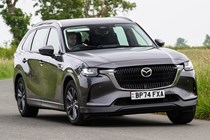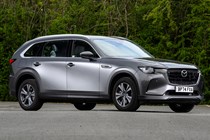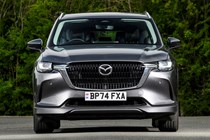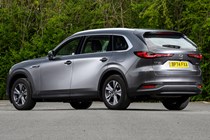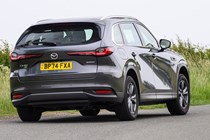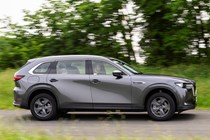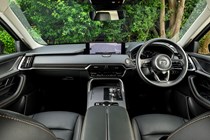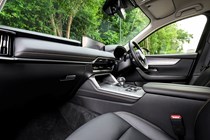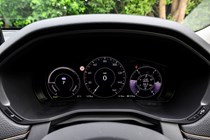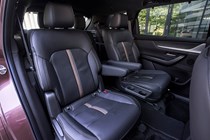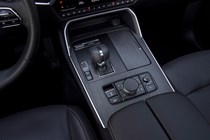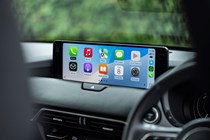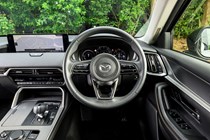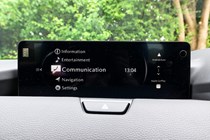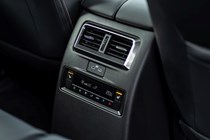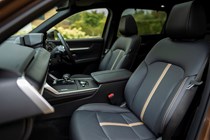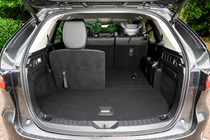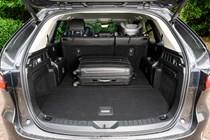
Mazda CX-80 engines, drive and performance
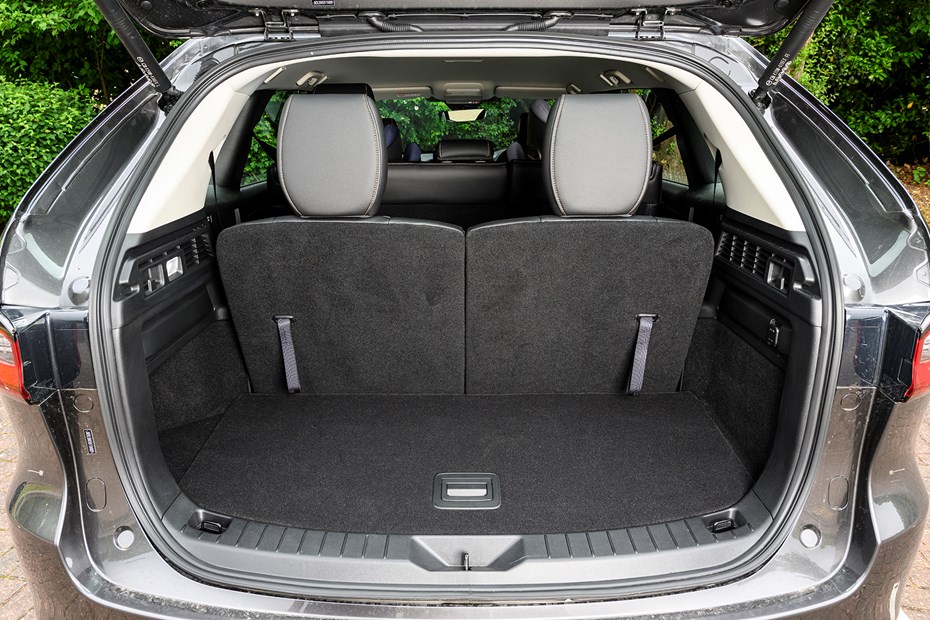
- Diesel or plug-in hybrid
- Diesel is the pick of the range
- Plug-in lacks polish
Mazda CX-80 electric PHEV motors and batteries
Most CX-80s sold in the UK will be the plug-in hybrid (PHEV), not least because of the tax savings for company car drivers and because it costs less to buy outright than the diesel. This version uses a 2.5-litre petrol engine paired with an electric motor and 17.8kWh battery. Combined power is 327hp and torque is 500Nm, good for 0-62mph in 6.8 seconds. It’s quick enough, but performance feels blunted unless you’re in Sport mode.
It pairs a 2.5-litre turbocharged petrol engine with an electric motor for a combined 327hp and 500Nm of torque, with a 0-62mph time of 6.8 seconds possible. It also packs a 17.8kWh battery, which Mazda says allows for a 36-mile electric driving range. Our test car certainly looked capable of meeting Mazda’s claim of 36 miles of EV driving range – on a run on UK B-roads we matched this, although we’ll be testing this more thoroughly at a later date.
While the electric range is similar to that of a Kia Sorento and new Hyundai Santa Fe, it lags behind the impressive new Skoda Kodiaq plug-in hybrid, which averaged 63 electric miles on a charge during our testing – a remarkable figure for a large hybrid SUV. However a Kodiaq PHEV is only available with five seats and not seven like the petrol and diesel versions.
Unless you can complete most of your miles on the CX-80’s electric range, we think the diesel model could prove to be the more efficient buy overall, and certainly the better tow car.
Mazda CX-80 diesel engines
The 3.3-litre straight-six diesel is the star of the show. It was first used in the CX-60 and, while most manufacturers have downsized their engines in recent years, Mazda says this larger capacity diesel enables it to run at a higher thermal efficiency, meaning it uses less fuel. This version certainly impressed in our six-month extended review – especially as a tow car.
The engine develops 254hp and 550Nm of torque (pulling power), with an integrated mild-hybrid system that allows the engine to turn off when it’s coasting to maximise fuel economy. Mazda claims just shy of 50mpg and 150g/km CO2 emissions. In terms of performance, it can accelerate from 0-62mph in 8.4 seconds and hit a 136mph top speed.
What’s it like to drive?
- Diesel is smooth
- Excellent ride comfort
- Surprisingly agile
There’s a big difference in the way the CX-80 drives depending on which engine you go for. The diesel is by far the most pleasant, with lots of low-down torque enabling a smooth getaway, and though it’s a bit more coarse-sounding than a six-cylinder engine in a BMW, for example, it suits this Mazda well, and is particularly refined and settled at speed.
In comparison, the plug-in hybrid is not the best. Throttle response is quite slow unless you have the CX-80 in its ‘sport’ mode (where it will consume more fuel), and it’s generally quite unrefined with some unusual noises made on occasion. It was exactly the same in the last CX-60 we tried, and it doesn’t appear that Mazda has fixed it.
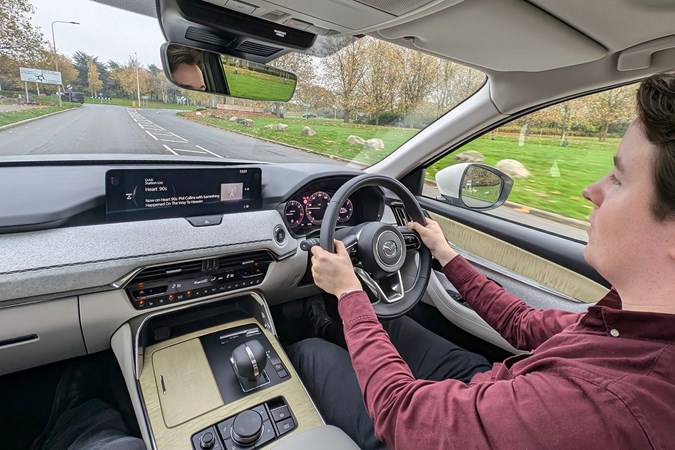
Elsewhere, though, the CX-80 drives well. The ride quality is improved over the unsettled CX-60, owing to its longer wheelbase that’s better at absorbing bumps and the retuned suspension setup specifically for this seven-seater. Although it’s considerably improved over its smaller brother, it still lacks the supple and cushioning ride that you find in the Skoda Kodiaq.
That said, the steering of the CX-80 has a surprising amount of weight and responsiveness to it for a car of this size, allowing a bit more enjoyment than you would usually get from a seven-seat SUV. We particularly like the sporty way it turns into corners, and the general feeling of agility – a genuine surprise if you’re expecting something big and unwieldy.
If you push it hard, there’s some body roll, though, but this isn’t a class of car designed to be hurried along, and a firmer ride would not suit a big family SUV. For a car of these dimensions (it’s only 5cm shorter than a full-size Range Rover), it’s quite easy to place and park, with a good turning circle and excellent visibility meaning it’s not as hard to manoeuvre as you might expect.


